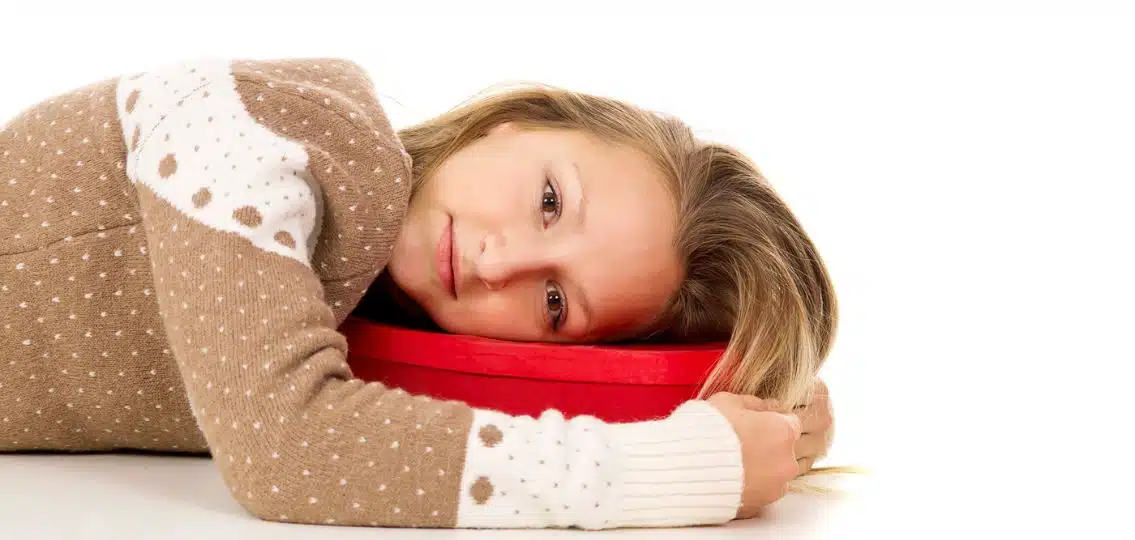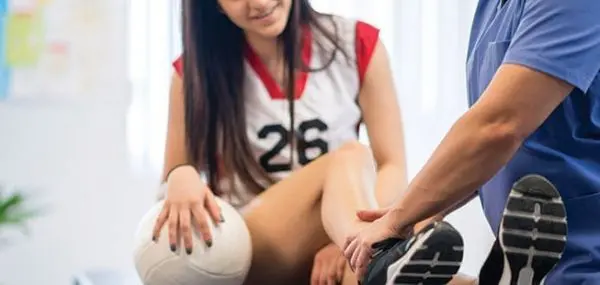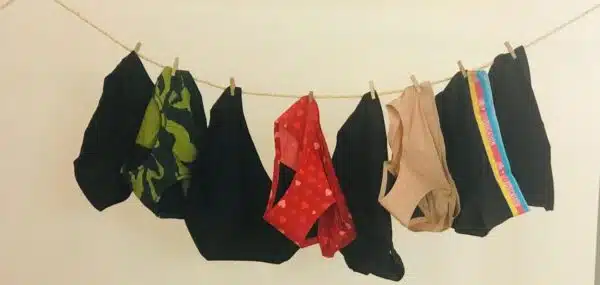With the start of every school year comes the promise of new beginnings and new experiences. For many girls, this may include their first menstruation.
Giving your daughter a “just in case” period kit for her locker or backpack is a proactive step towards ensuring she feels confident and ready to embrace this milestone. It’s the perfect opportunity to have a candid conversation about what she can anticipate when her period arrives.
In fact, it’s a good idea to have these conversations about menstruation sooner rather than later. The average age for a girl to start her period in the United States is 12, but it’s not unheard of for girls to begin menstruating as early as 8 or as late as 15. Regardless of when your daughter has her first period, making a kit with them is the best way to be prepared.
What Is a Period Kit?
A period kit is a bundle of items that someone might need during their period. It typically includes items like pads or tampons, wet wipes, pain relievers, and other products to help manage period symptoms. While many companies sell period kits, you can also make your own and personalize the contents to meet your child’s specific needs.
Why It’s Important to Be Prepared For Your Daughter’s First Period
Having what she needs on-hand can help prevent uncomfortable and potentially embarrassing situations, such as leaking or staining her clothing. It can also help reduce the stress and anxiety that can sometimes accompany menstruation.
Why You Should Make Your Own Kit vs Buying One
There are many advantages to creating a DIY period kit rather than purchasing a pre-assembled one:
Cost-Effectiveness: Making your own period kit can be more cost-effective than buying a pre-made one. Pre-assembled kits often include items that she may not need or want, and you may end up paying for things that are unnecessary. With a DIY kit, you can choose to include only what you need.
Personalization: A DIY period kit allows you to personalize the contents to suit her preferences and needs. You can also include additional items that may not be found in a pre-made kit, such as her favorite snacks or a comforting heat pack. This personalization can make the experience more comfortable.
Education and Empowerment: Building a personalized period kit can be an educational and empowering experience. By taking the time to learn about different period products and how they work, she can make informed decisions about what to include in the kit. This knowledge can help her feel more in control of her menstrual health.
What to Include in a Period Kit
It’s easy to get overwhelmed with the number of products on the market. From cups to wipes, there seems to be a solution for every girl. When putting together a DIY period kit for your child, consider including the following items:
Waterproof Pouch
A small, waterproof pouch or bag makes it easy (and more discreet) to hold everything and take the kit with her wherever she goes. You may even consider a larger pouch to carry an extra set of pants or leggings in case of leakage. Just make sure the pouch can fit into her backpack or school bag for discretion.
Pads or Tampons
Most girls will probably want to start with pads until they’re more comfortable with other options, such as tampons or a cup. Today’s pads are super-comfortable, absorbent and stay secure with ‘wings’ that wrap around underwear. Start with light absorbency and switch out for a larger flow if/as needed.
Panty Liners
These can be useful for lighter flow days, pre-periods or as a backup to tampons. Moreover, today’s liners for teens are typically thinner and more narrow to fit smaller frames.
Period Panties
Period panties are a great alternative to traditional pads or tampons. They’re washable, with an absorbent layer in the gusset to prevent leaks. There are a number of absorbency levels and sizes to choose from, so your child can wear them alone, or with other period products for extra protection.
Wet Wipes
Small and discreet, wet wipes can fit almost anywhere. Just make sure they’re appropriate for delicate or sensitive skin. The right wipes should be hypoallergenic, alcohol-free, fragrance-free and environmentally-friendly for proper disposal. These can help her feel fresh and clean during her period (or in-between cycles).
Pain Relief
Over-the-counter pain relievers such as ibuprofen or acetaminophen can help alleviate cramps and other menstrual symptoms. Provide a small ziploc or container with pain medication so she can go about her day, pain-free and comfortable.
Change of Underwear
In case of leaks or stains, it’s a great idea to toss in a few extra pairs of underwear, or even period panties (as mentioned above).
Small Plastic Bag
Consider providing a few small plastic bags to dispose of used products when a trash can isn’t readily available.
Water Bottle
Staying hydrated can help reduce period symptoms. Water helps replenish body fluids, reduce headaches and relieve bloating. It’s recommended that girls increase the amount of water they drink during menstruation.
Reusable Heating Pack
If your child is suffering from menstrual cramps, a reusable heating pad might do the trick. According to Stewart Parnacott, an instructor at the Baylor College of Medicine, “The application of heat helps to dilate blood vessels and increase blood flow to the affected area. This increased circulation can reduce muscle tension and alleviate discomfort associated with menstrual, muscle, or abdominal cramps.” In addition, Parnacott says that the warmth from a heating pad can promote relaxation and ease the intensity of cramps.
How to Give A Period Kit to Your Daughter
When giving the kit to your child, take the time to explain what each item is and how to use it. This can be a great opportunity to have an open and honest conversation about menstruation and answer any questions she may have. For example:
- Find a comfortable setting: Choose a time and place where you can both talk privately and without interruption.
- Start with a general discussion about puberty and menstruation: Explain that menstruation is a normal and natural part of growing up. You can use age-appropriate language to describe how the menstrual cycle works.
- Introduce the period kit: Show your child each item in the kit and explain what it is and how to use it. This is a good opportunity to demonstrate how to properly use pads or tampons, and to discuss the importance of changing them regularly.
- Encourage questions: Let your child know that it’s normal to have questions about menstruation, and encourage her to ask anything she might be curious about.
- Discuss the emotional aspects of menstruation: Explain that some people experience mood swings, irritability, or sadness before or during their period, and that this is normal. Encourage your child to talk about her feelings and to let you know if she needs support.
- Reassure her: Let your child know that you are always there for her, and that she can come to you with any concerns or questions in the future.
By taking the time to have an open and honest conversation with your child about menstruation, you can help reduce anxiety or embarrassment (hers and yours!) and empower her to take control of her menstrual health.




